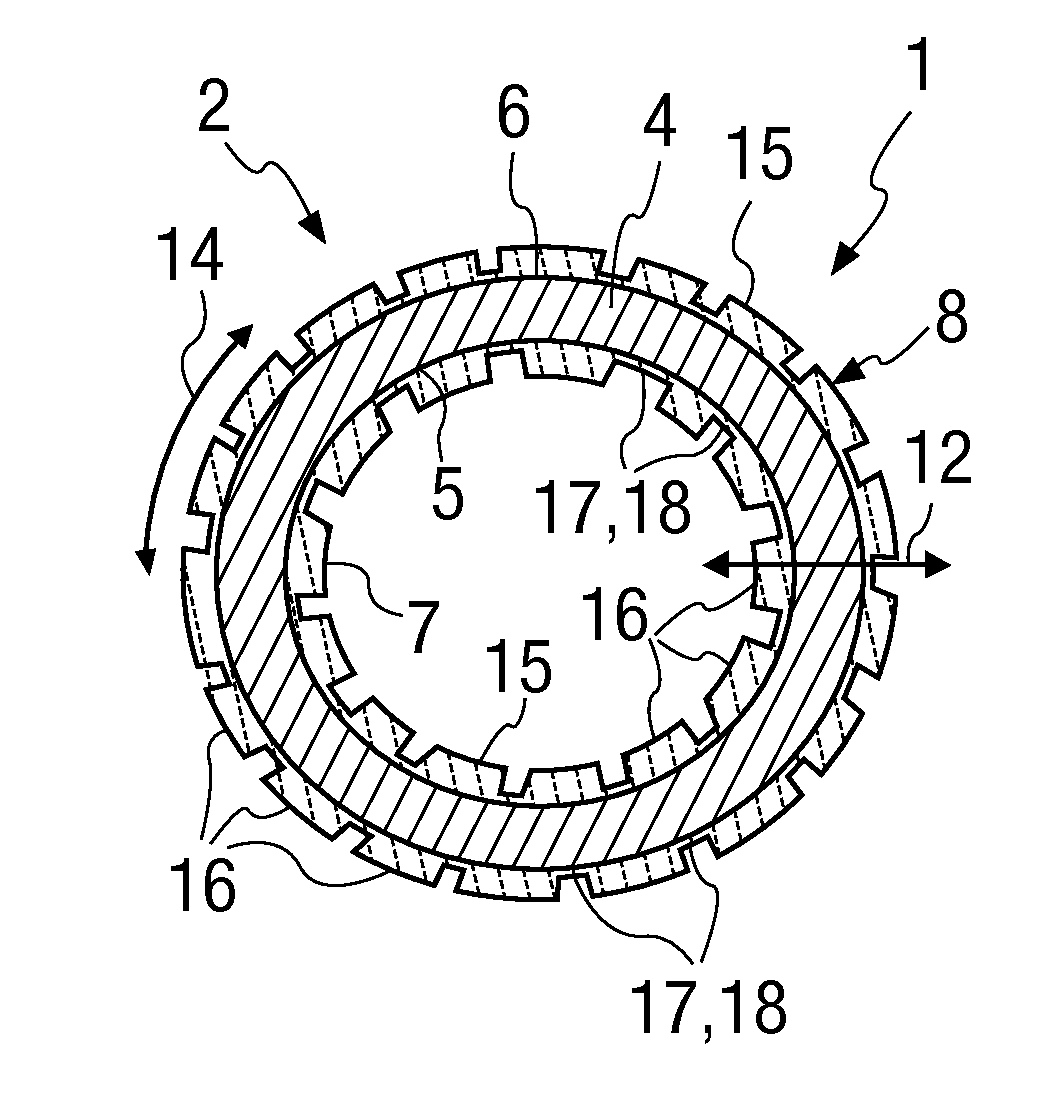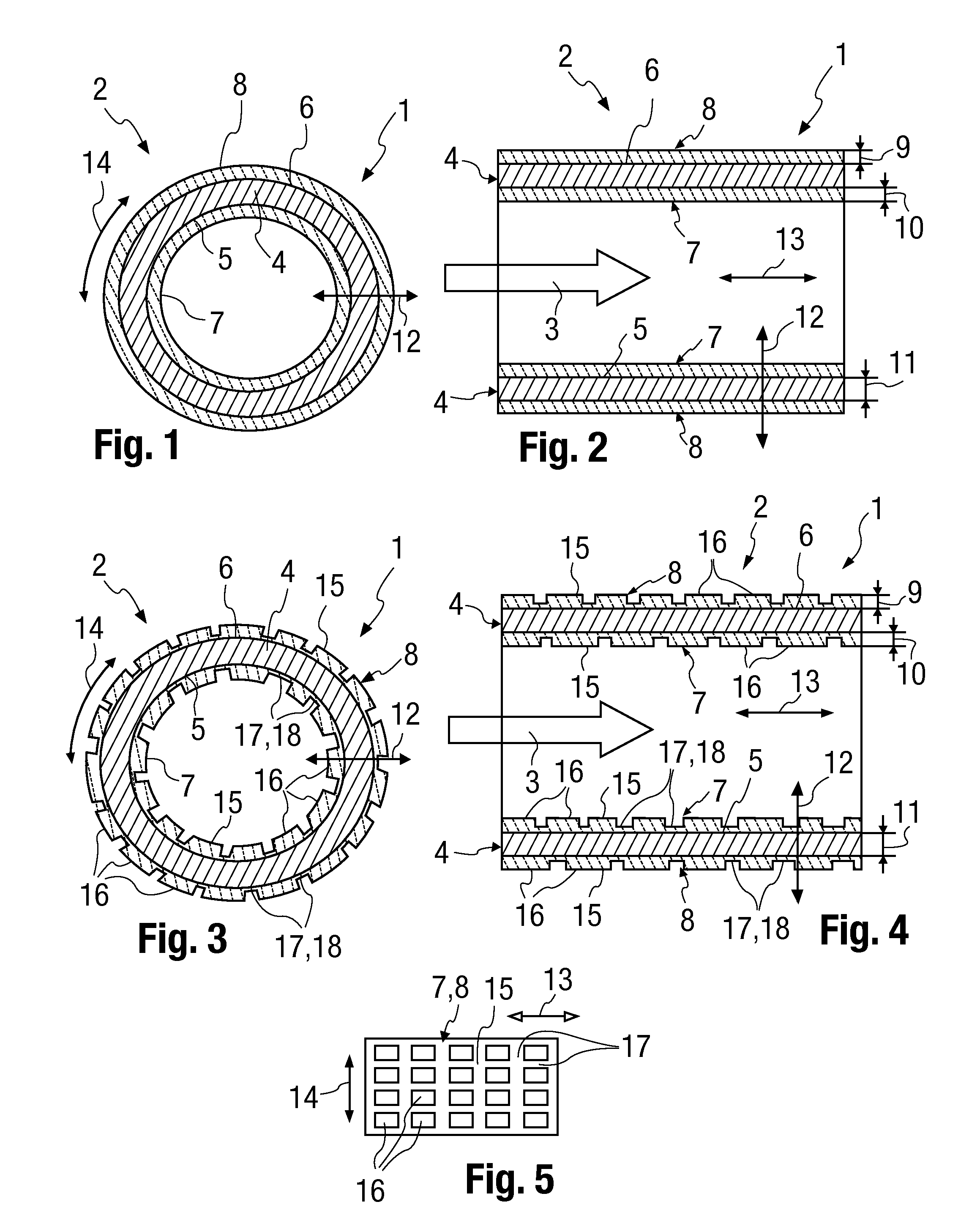Tubular body and exhaust system
a tubular body and exhaust system technology, applied in the direction of exhaust treatment, heat transfer modification, lighting and heating apparatus, etc., can solve the problems of compromising the service life of such a coating, affecting the service life of the coating, and increasing the weight of the component, so as to achieve good service life, small installation space, and low weight
- Summary
- Abstract
- Description
- Claims
- Application Information
AI Technical Summary
Benefits of technology
Problems solved by technology
Method used
Image
Examples
Embodiment Construction
[0026]Referring to the drawings in particular, FIGS. 1 through 4 show a part of a tubular body 1 in the cross section and in a longitudinal section, respectively. The tubular body 1 preferably forms a component of an exhaust system 2, which is otherwise not shown, so that the exhaust system 2 has at least one such a tubular body 1. It is clear that the exhaust system 2 may also have two or more such tubular bodies 1.
[0027]The exhaust system 2 is used to remove exhaust gas of an internal combustion engine, which may be arranged especially in a motor vehicle. The tubular body 1 is correspondingly likewise used to carry exhaust gas. A corresponding exhaust gas flow is indicated by an arrow in FIGS. 2 and 4 and is designated by 3.
[0028]The tubular body 1 is embodied with a round cross section in the example shown in FIGS. 1 through 4. It is clear that other cross sections may, in principle, be provided as well. These may be other round cross sections or any designed cross-sectional geom...
PUM
 Login to View More
Login to View More Abstract
Description
Claims
Application Information
 Login to View More
Login to View More - R&D
- Intellectual Property
- Life Sciences
- Materials
- Tech Scout
- Unparalleled Data Quality
- Higher Quality Content
- 60% Fewer Hallucinations
Browse by: Latest US Patents, China's latest patents, Technical Efficacy Thesaurus, Application Domain, Technology Topic, Popular Technical Reports.
© 2025 PatSnap. All rights reserved.Legal|Privacy policy|Modern Slavery Act Transparency Statement|Sitemap|About US| Contact US: help@patsnap.com


